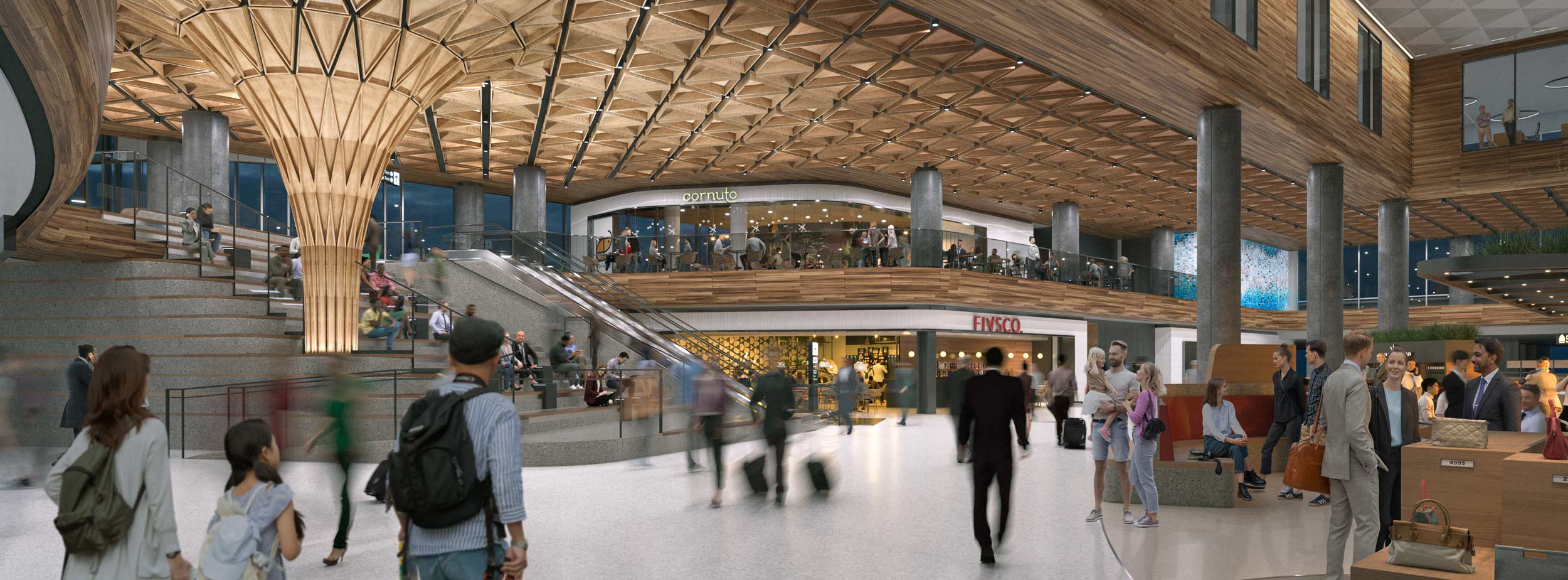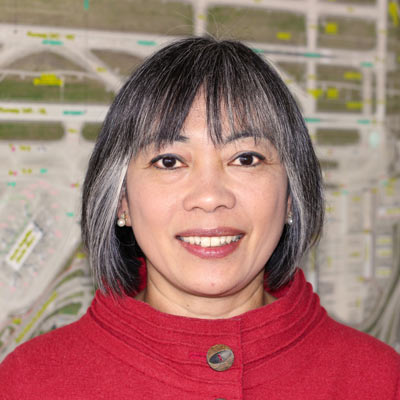
Upgrade SEA
How $4.6 billion in five years is just a continuation of improvements at Seattle-Tacoma
By Eileen Francisco | Port of Seattle
We’ve all heard the line ‘the more things change, the more they stay the same.’ Here at Seattle-Tacoma International Airport (SEA) we’ve already been upgrading for several years, so the latest $4.6 billion in capital improvements over the next five years, seems like normal. But with more than 120 projects scheduled, the key is keeping the momentum and focus to stay on track and deliver for our customers.
SEA has been one of the fastest-growing airports in the U.S. for more than a decade, a reflection of our region’s economic and population growth. Nine straight years of record passenger growth peaked at more than 51 million passengers in 2019. Working through the pandemic, we opened two major expansions in the $712 million N Concourse Modernization in 2021 and the $968 million International Arrivals Facility in 2022.
However, that’s not enough. We continuously build upon our improvements to provide a comfortable, easy travel experience for all who connect to the Puget Sound region and to the world. Upgrade SEA takes that next step in updating a 74-year-old airport with modern and efficient facilities, and traveler focused technology enhancements, services and amenities.
Upgrade SEA’s top projects take flight
- C Concourse Expansion
- Main Terminal Improvements Program
- SEA Gateway
- Curbside Accessibility and Safety
- Roadway Improvements
- Baggage Optimization
- Restroom Renovation
- Automated Parking Guidance System
- Checkpoint 1 Relocation
- Concourse A Building Expansion for Lounges
- S Concourse Evolution
- SEA Underground Controls Replacement
Upgrade SEA will improve the level of service from curb to gate, reduce congestion, provide a less crowded terminal and more efficient airfield traffic, all while investing in our community and its environmental health. The work includes programs on the airfield, noise mitigation in our communities, infrastructure renewal and replacement and tenant improvements. To help us make insightful, informed decisions, we use a priority ranking review process. First, we ask, “Is the proposed project a must?” If the improvement or expansion helps SEA meet local, state or federal regulations, we just do it. Our Curbside Accessibility and Safety Project fits this criterion because it makes our curb front compliant with the Americans with Disabilities Act. SEA will be safer and more accessible for all passengers with a smoother, safer walk from the parking garage to the main terminal, improved access with eliminated curbs, better ramps and advanced bollards to protect pedestrians.
If the proposed project is not tied to regulatory requirements, we ask a second question: “Should we do it?” After candid discussions, we assign each project a weighted score according to a set list of questions and rank it among the hierarchy of scored upgrades, improvements and additions.
Projects with the potential to provide a new stream of non-aeronautical revenue typically receive higher rankings, which is why we are repurposing unused space on the terminal’s promenade level, expanding the Delta Sky Club and Club SEA lounges and adding four new floors to Concourse C. The newly expanded Concourse C will feature dining and retail, services and amenities, performance spaces, a glass airfield overlook and office spaces for businesses, airlines and the Transportation Security Administration. While expanding the concourse, we also are taking the opportunity to incorporate more sustainable features, update technology and create a sense of place by weaving in the look and feel of the Pacific Northwest.
Once we know which projects will advance into development and construction, it’s our job to keep them moving. Good decision-making fuels our momentum and is a valued part of our program’s culture. Large capital programs have been known to stall because of an owner’s inability to make difficult decisions. Not at SEA. Investing in due diligence, early risk assessments and early contractor involvement allow us to make tough decisions confidently and move on.
Equally as important is understanding that the process of discovery doesn’t stop simply because we made a decision. The learning continues, and, if along the way, we determine General Contractor/Construction Manager delivery would be more effective than our original decision to use Design-Bid-Build, we switch. If we anticipate the impacts of a gate closure or system shutdown would pose significant disruption to operations or passengers, we adjust the plan. Major capital programs are fluid by nature. Giving our staff a built-in pressure release valve helps facilitate decision-making.
External developments such as supply chain issues, long production lead times and escalating material costs have also threatened our program’s progress. To prevent delays, we procure materials earlier in a project’s lifecycle and rent storage space, so the materials are on hand when contractors are ready for them.
SEA has one of the smallest footprints in the country for the numbers of passengers we serve. With only 2,500 acres, we are dwarfed by larger airports like Houston (10,000 acres), Dallas-Fort Worth (17,000), or Denver (33,000). SEA has become an expert at finding creative ways to add, repurpose or dual-purpose existing campus space to maximize utility. In some instances, we’ve done high density development by building up instead of out as we are doing in the Central Terminal and C Concourses. We also reimagined our S Concourse, initially designed for widebody aircraft, to accommodate narrowbody planes during non-peak times.
With square footage at a premium, we minimize construction space whenever possible by bundling contracts for multiple discrete projects in the same area or timeframe. That way, we onboard fewer contractors and minimize laydown areas. If possible, we try to use the just-in-time method for delivery of materials.
Reaching for the stars
SEA received the Skytrax 4-Star rating for customer service as the Best Airport in North America for the second consecutive year.
SEA aspires to earn a 5-Star rating after Upgrade SEA is complete.
Other ways we are enhancing passenger flow in our existing footprint include:
- Redesigning roadways to our main terminal, which helps vehicles more efficiently sort into the appropriate access lane for drop-off, pick up, ground transportation and parking.
- A state-of-the-art Automated Parking Guidance System in the garage that will track and display the number of available parking spaces. A green light in the drive lane will indicate an open stall, cutting search time in half.
- And the SEA Gateway project will open the north end terminal into a dramatic, light-filled spacious ticketing area for our hometown carrier, Alaska Airlines.
These and other projects are transforming our airport and providing the space and modernization we need to continue meeting or exceeding passengers’ expectations – and our own. Cumulative efforts across many stakeholders and departments’ initiatives, all working together, contribute to the overall success in delivering our capital program. Once Upgrade SEA is complete, we will offer more of what customers know and love about SEA Airport, and more of what they need and want – a travel experience that is predictable, convenient and most enjoyable.
Images credited to the Port of Seattle
ABOUT THE AUTHOR
 Eileen Francisco
Eileen Francisco
Director, Aviation Project Management
Port of Seattle
Eileen Francisco has worked at the Port of Seattle for 20 years in different roles and is currently serving as the Director of Aviation Project Management. Her previous roles included leading the capital development initiatives and the teams that delivered the Infrastructure, Airfield and Third Runway projects.
Contact her at francisco.e@portseattle.org
